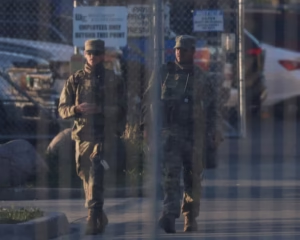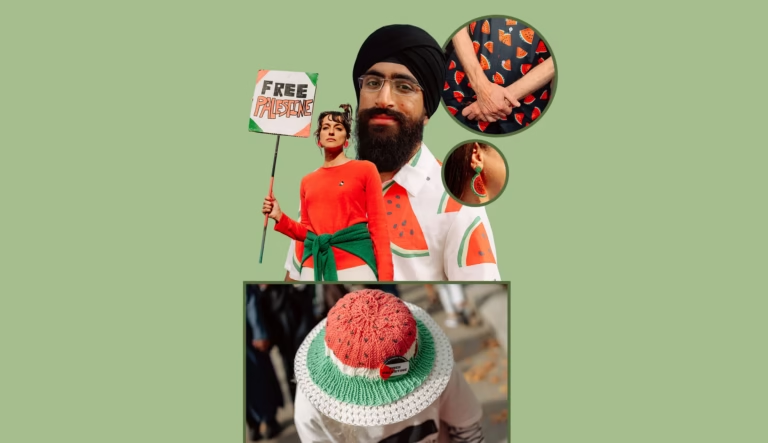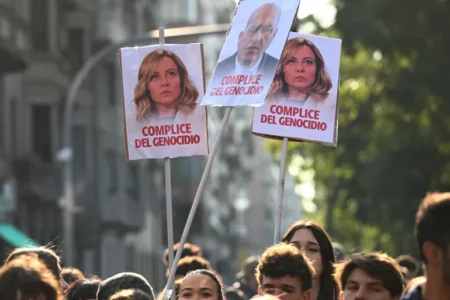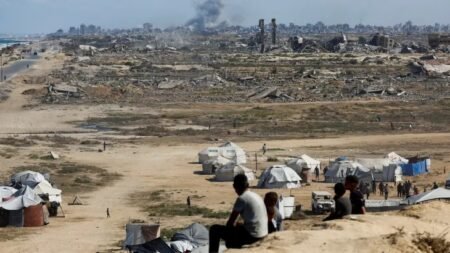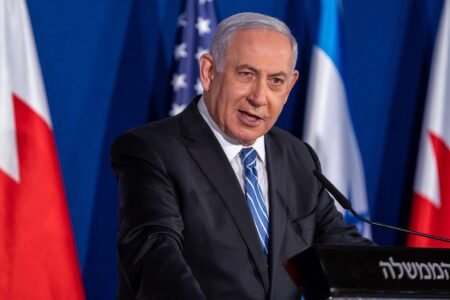In central London, marchers at a national Gaza rally are using their clothing to make a statement. One man wears a sweatshirt featuring Hind Rajab, a five-year-old girl killed in the Gaza conflict with her family. He says it is his way to “keep her memory alive until justice is served.”
Protest dressing has become a central part of rallies over the last two years. Supporters are wearing symbols and colors of solidarity, turning their clothing into a non-verbal message.
Mariama, in her 30s from Nottingham, wears a football-style shirt with the Palestinian flag and the words “viva Palestina.” She says it is a way to voice opposition to the occupation. Similarly, Rev Poppy Hughes, 65, wears a Palestine Solidarity Campaign pin to identify her stance.
Marchers see shared dress as a way to build unity. Suhail, 44, and Loulou, 45, explain that wearing similar colors or symbols helps participants feel connected. Simple items like keffiyehs, badges, or watermelon-themed accessories show solidarity without words.
Jaiman, 28, from Bexley, wears a shirt covered in watermelons, while 71-year-old Tony adds the fruit theme to his outfit. Lamdy, 65, customizes clothing for each protest. She painted a watermelon on a shirt, saying, “Words are not being heard.”
Protest dressing has a long history. Camille Benda, author of Dressing the Resistance, describes it as using clothing or accessories to send a visual message. Richard Ford from Stanford explains that people often choose a common style to symbolize their struggle. The suffragette movement’s white attire and civil rights activists’ formal clothing are examples.
Certain items become shorthand for a movement. The pink pussyhat represented women’s rights, rubber gloves symbolized protests in Greece, and the yellow vests signaled France’s gilets jaunes. Authorities often react to such clothing. During the first Palestinian intifada, women wore “intifada dresses” featuring tatreez embroidery, a style of traditional Palestinian stitching, which was forbidden at the time. Even in the UK, protest clothing can draw attention; one man was arrested in Parliament Square for a T-shirt, though he was later released.
Palestinian designer Ayham Hassan uses fashion as protest. For his graduate collection at Central Saint Martins, he incorporated a tatreez scarf made by his mother, highlighting the difficulty of transporting cultural symbols. He says, “It’s not safe to have tatreez going from one place to another because it’s clearly Palestinian.”
Protest dressing extends beyond rallies. Aya Mousawi, an editor and regular protest-goer, stencils flags and slogans on her clothing, wearing them in daily life to keep the cause visible. Festivals, offices, and parks become platforms for activism.
Individual expression is growing in protest dressing. Ford notes that decentralised movements allow participants to choose personal attire while still signaling solidarity. Laura O’Herlihy, 51, wears a keffiyeh at the End of the Road festival, saying, “Every time you look down or see others, it keeps the message alive.” Jim Derbyson dyed his beard with Palestinian flag colors to raise awareness.
Global figures also embrace protest dressing. Greta Thunberg wore a football jersey supporting Palestine, while Bella Hadid appeared in a keffiyeh dress at Cannes. Designers like Katharine Hamnett and Annie Lennox continue to use slogan T-shirts to support humanitarian causes, showing that clothing can act as a visual caption for activism.
Done well, protest dressing becomes a powerful symbol. Ford says, “We’re all speaking with one voice just by what we’re wearing. Images of people in shared attire create a strong visual impact.” From London to festivals worldwide, Gaza protest dressing is helping activists keep their cause visible and memorable.



